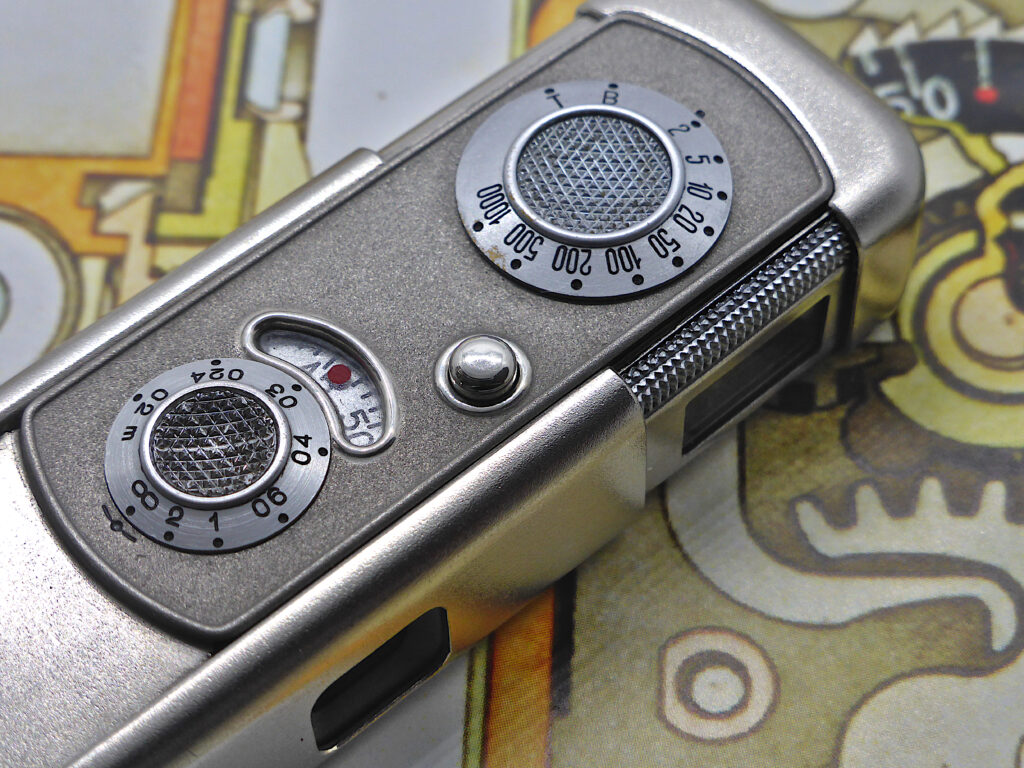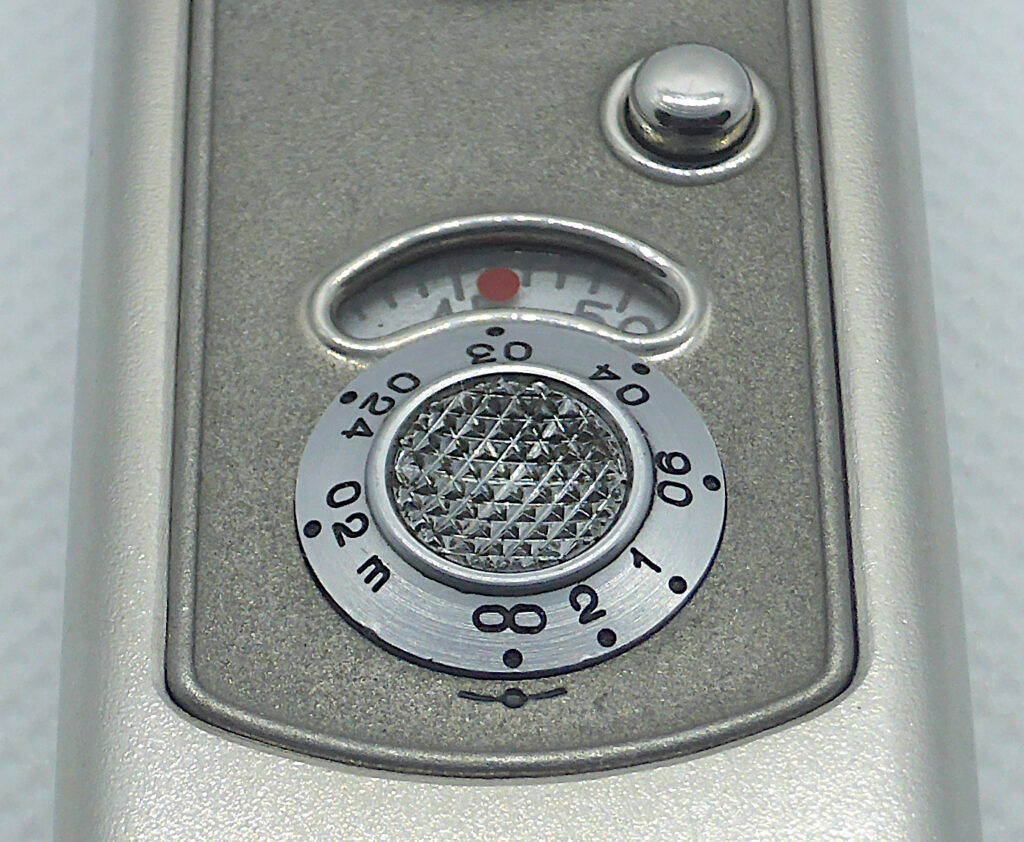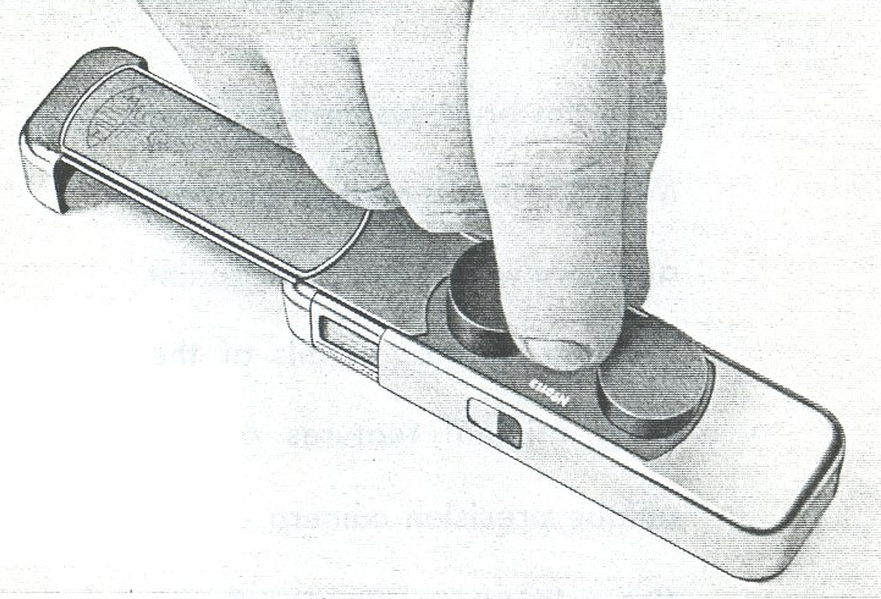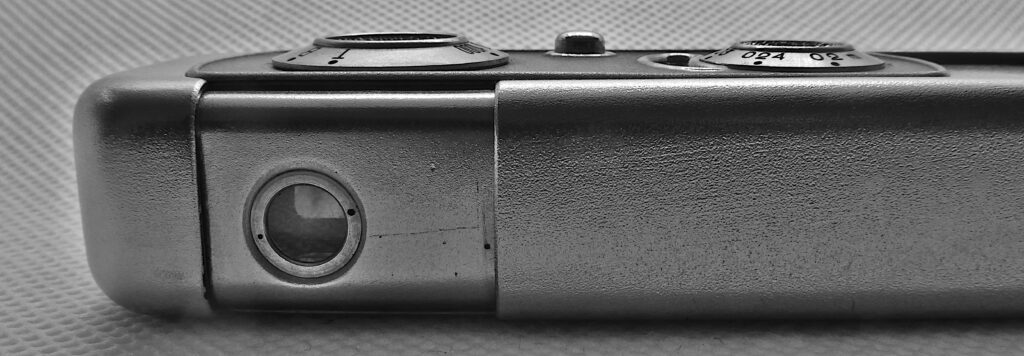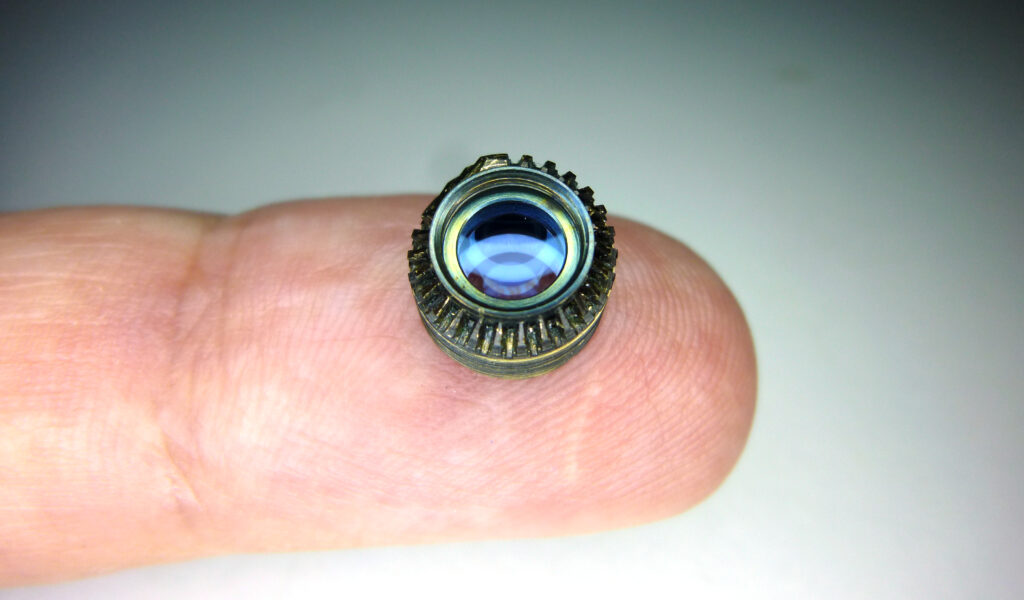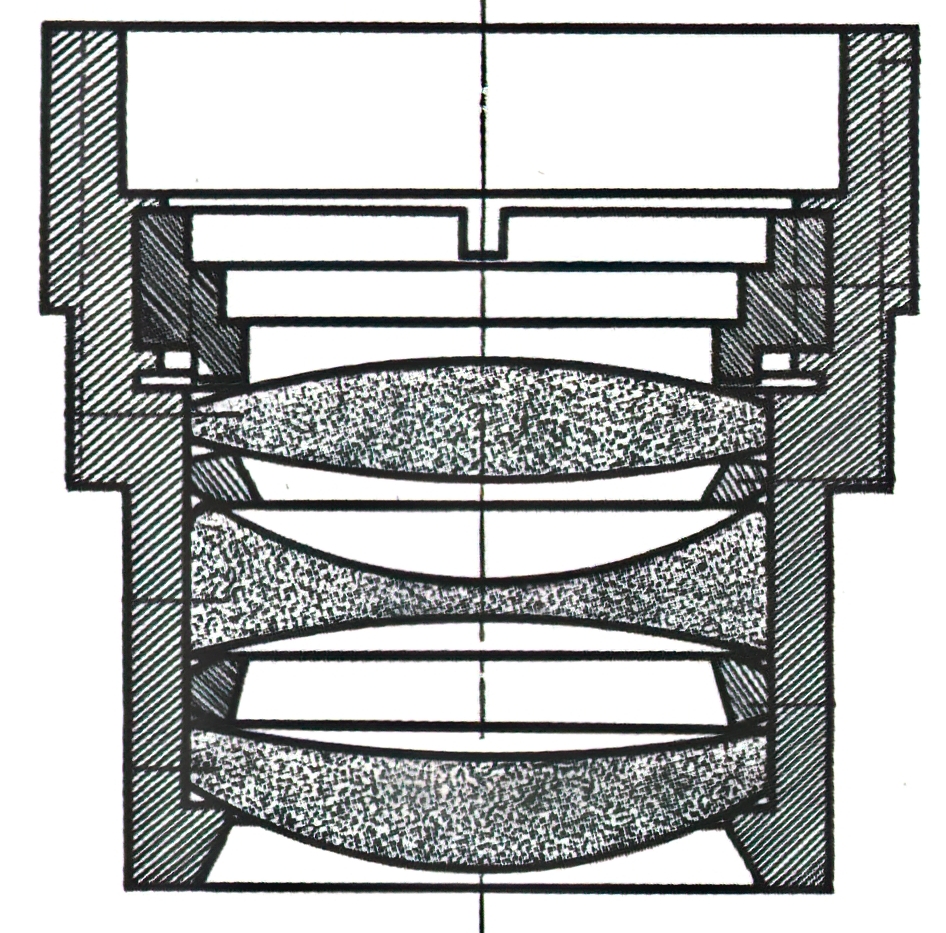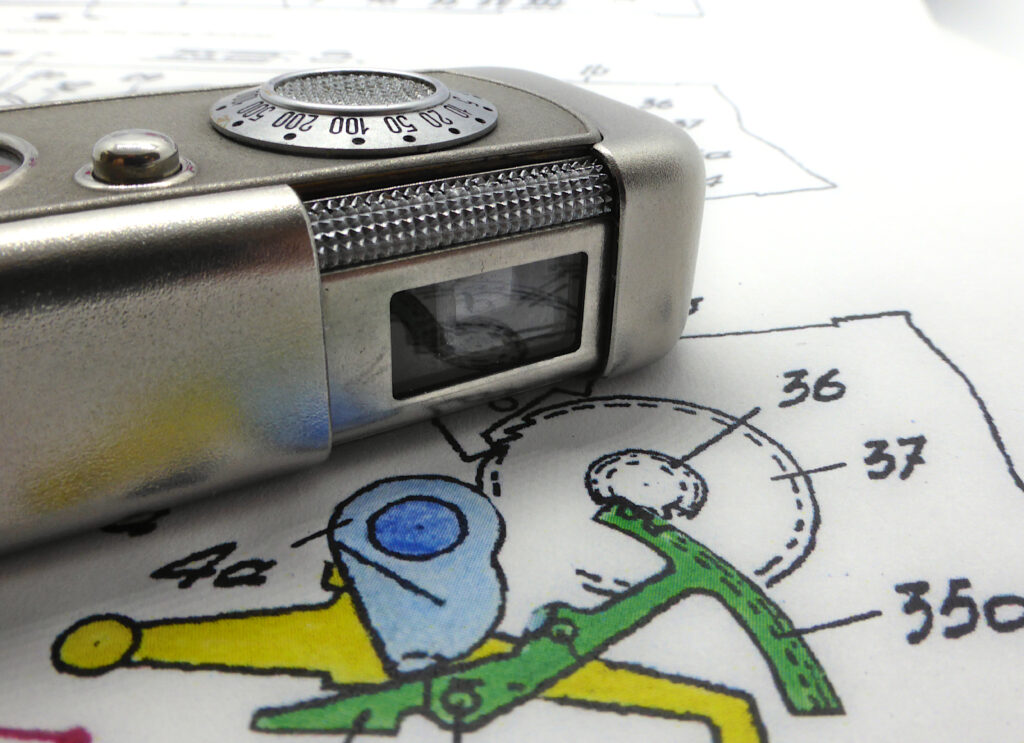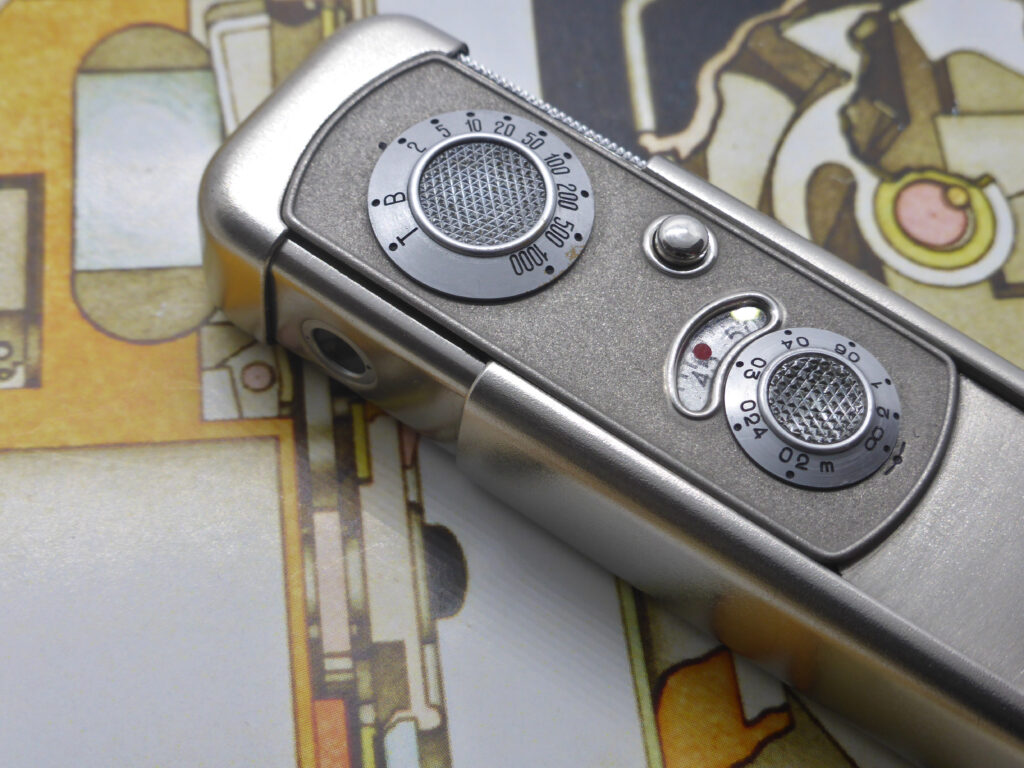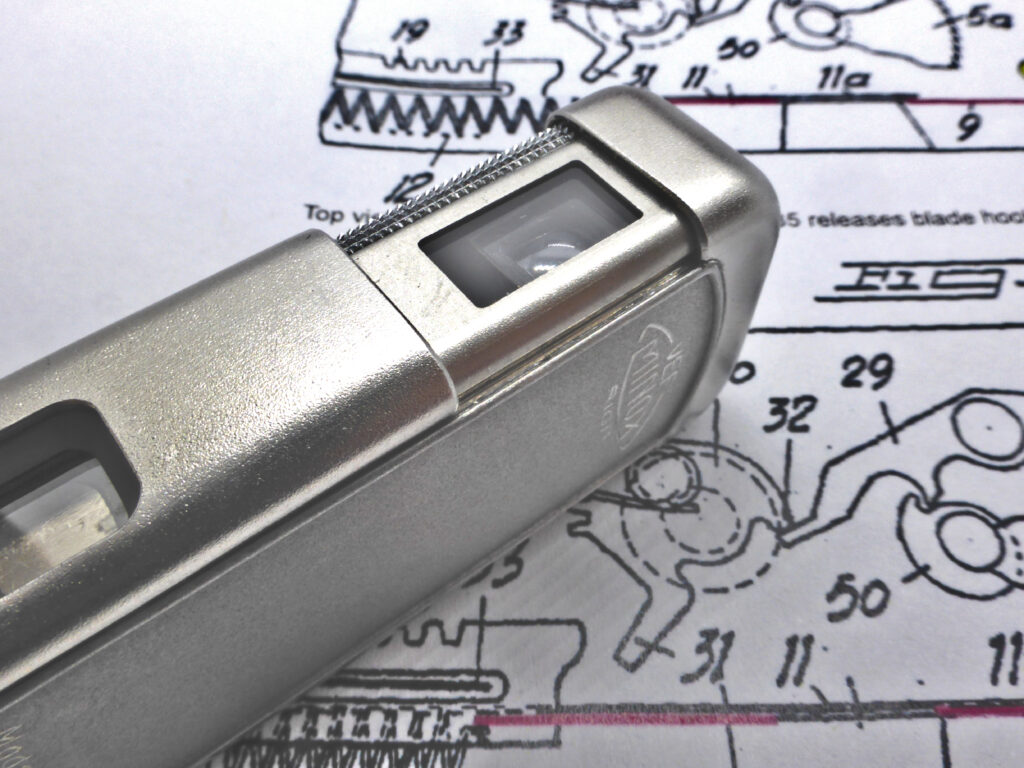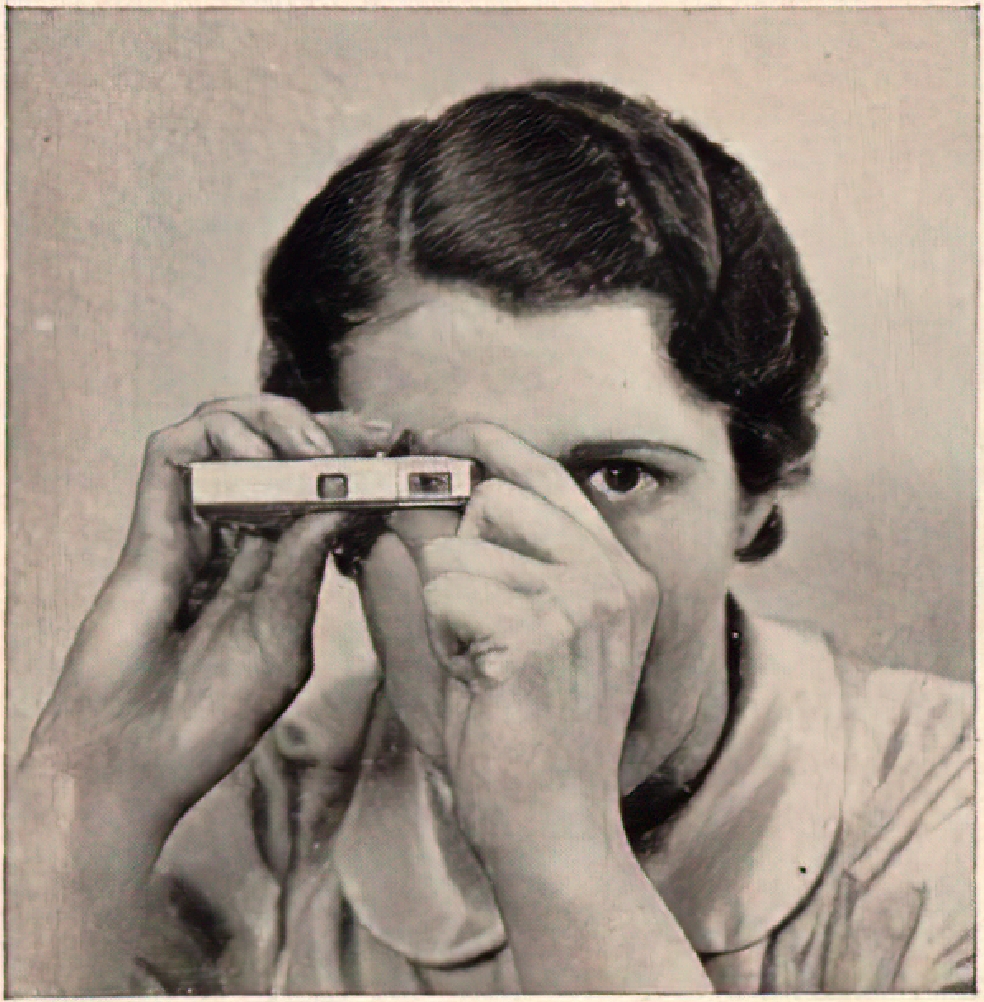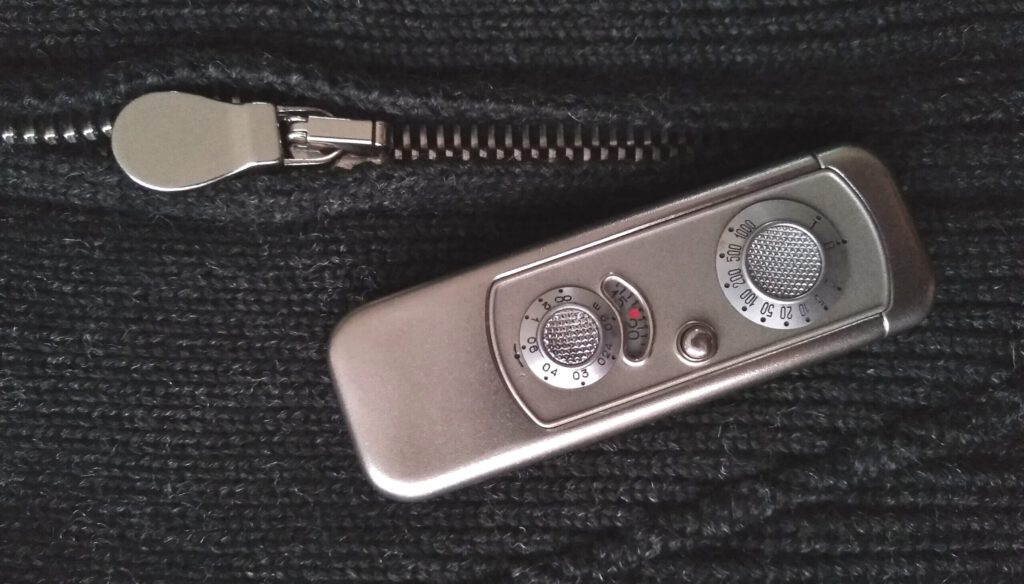
Page Contents
- Why this camera makes me smile
- Entirely new principles
- The Riga Minox construction
- A success story
- Production of the Riga Minox
- Taking pictures with the Riga Minox
- Riga Minox in a Russian prisoner of war camp
- Conclusion
- Zusammenfassung des Artikels „My Riga Minox – The Turning Point“ (Aktualisierte Fassung)
- The Legacy Endures
- Further articles on the VEF Minox Riga
Why this camera makes me smile
This tiny camera looks like a jewel and is very robust at the same time. The Riga Minox or VEF Minox (Minox model I) was invented 90 years ago and still works today like the first day. It makes me smile that I can simply insert a film into this camera today and take photos with it. Photos like these.
The Riga Minox introduces itself
The image flyer lists the unique selling points of this camera:
“Now you too can capture moments effortlessly at any time… A small masterpiece of the highest precision…The Minox is not only the smallest camera in the world, but also the most convenient and easiest to use:
- Ready to shoot by pulling out the sleeve
- No extra button to cock the shutter
- No aperture, yet maximum depth of field
- Only two dials, yet universally applicable
- Innovative precision viewfinder with automatic parallax compensation
- Built-in yellow filter with automatic switch-off
Loading the film is also unmatched in its simplicity“
The most amazing of all Minox cameras
The Riga Minox is the most amazing of all Minox cameras. It was created from scratch by a single person in the early 1930s. By 1934, the blueprints had been meticulously developed down to the finest details. In the summer of 1936, a prototype was constructed, crafted from sleek, satin-finished stainless steel. This model was not only aesthetically impressive but also fully functional, successfully utilized to produce a series of demonstration photographs that showcased its capabilities.
This first design already had all the essential features of the later models. It was the big hit, The Turning Point, as the title of the first advertising brochure read.
The philosophy of this camera is best documented in this brochure. The following statements in “” are taken from this booklet and can therefore be considered the authentic design goals of the inventor Walter Zapp.
Entirely new principles
The overarching goal was “a camera to be devoid of the intricacies of operation inherent in precision cameras but at the same time to be capable of superlative work”.
“Above all, the camera had to be reduced in size … that it could be slipped into the smallest handbag or the ticket pocket without being noticed.”
“It had to be sympathetically responsive to all photographic situations and yet so simple that no technical knowledge or skill would be necessary for its operation.”
“An elegant companion, like a fine watch, for sophisticated ladies and gentlemen to carry and use to record the events of their daily lives.”
No wonder that its artistic design has earned it a place in the Museum of Modern Art.
Extreme handiness
“A light lengthwise pull prepares the camera for action. All that remains to be done is to press the button.” Since there is no aperture to set, only the exposure time and the distance need to be set. With the exposure latitude of the black and white films of the past and the color films of today, a rough estimate of the brightness is sufficient. This can often be left unchanged.
The distance setting is only necessary for subjects closer than 2 m. A small arc indicates the depth of field. But then the Minox shows its strengths, as it can focus down to 0.2 m. At the same time, the automatic viewfinder ensures that you always see the correct image section even in close-ups.
Maximum convenience
The camera weighs only 135 g in total (own measurement) and fits securely in the hand when unfolded when taking photos.
“An exclusive Minox feature is the automatic winding-on of the film after each exposure … The short lengthwise movement which extends the body of the camera to the working position simultaneousely sets the camera in readyness for taking the picture. The shutter is set and the film moved forwards and pressed against the picture aperture. Externally the lens and the view-finder are uncovered, these four operations achieved automatically when the camera body is extended. … When opening or closing the Minox, the fingers may remain in the same position as for the actual taking of the picture.”
The idea of providing the film with 50 exposures in a film cartridge with two chambers was completely new. “For daylight loading – you simply slide the panel on the reverse of the camera, remove the exposed magazine and insert a new one”. Kodak took up this principle many years later and it became widely known through the Kodak 126 instamatic film in 1963.
Smallest format
“The complete camera is a slim case with no exposed optical parts and free from extruding accessories.” The housing is made of extremely robust stainless steel. In contrast to the successor models made of aluminum, there is hardly any risk of dents and scratches even with rough handling.
You have to bear in mind that the Leica was considered a pocket camera at the time, which is why its designer Oskar Barnack called it the “Lilliput camera”. Photographers used them because of their small size, as they always had their cameras with them and wanted to be ready to take pictures quickly. This had been the reason for the Leica’s great success.
For Walter Zapp, however, the Leica was still far too big. To get an idea of the actual difference in size, we can see both cameras (Riga Minox and Zorki, a Leica clone) side by side:
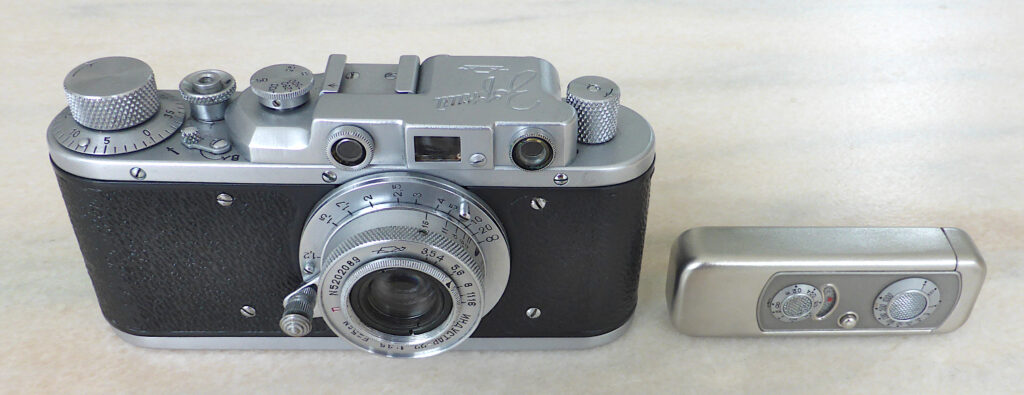
This shows the degree of miniaturization achieved by the Minox compared to the Leica. In terms of numbers, the Leica (500 g) is almost four times heavier than the Minox (135 g). The volume of the Leica ( 370 cm3) is more than ten times greater than that of the Minox (35 cm3).
The Riga Minox construction
In order to achieve the above-mentioned goals, especially ease of use, the internal construction had to be even more sophisticated.
“Miniature cameras for very small pictures have been constructed before, however they were not based on new principles… Therefore ist was necessary to design and develop an entirely new type of camera… This demanded that considerable technical difficulties had to be overcome because the smaller the camera, the greater the need for precision in each and every component.”
The principle of a camera had to be completely rethought because there was nothing comparable. There were various small cameras on the market, but these were just miniature versions of the known designs. With the Riga Minox, everything that had existed before was questioned and amazing solutions were found. The most striking is the pulling apart to transport the film and cocking the shutter. This principle was still used 40 years later in pocket cameras.
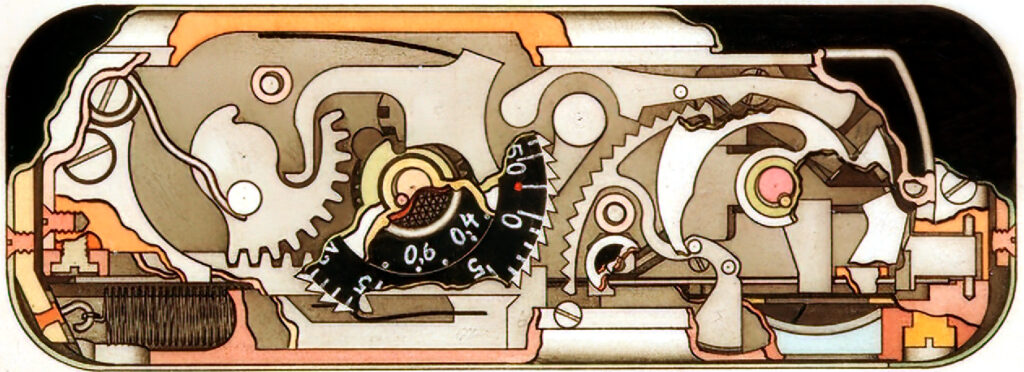
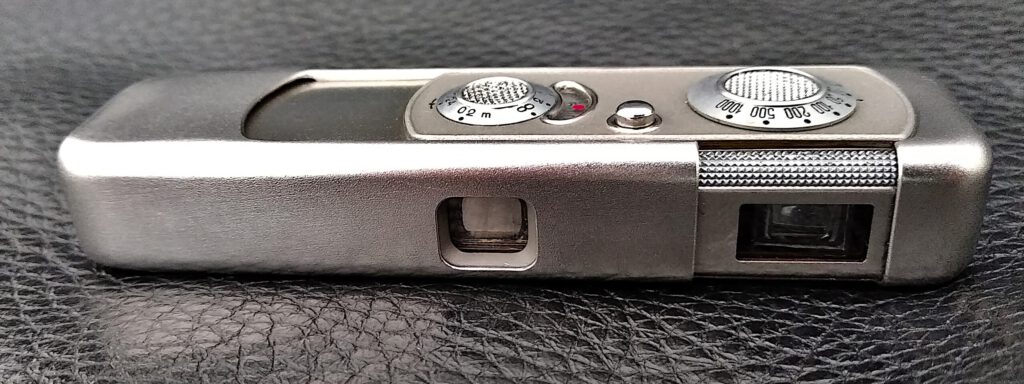
It was a unbelievable constructive achievement to imagine in his brain three dimensionally the mechanisms of distance setting with coupled pivoting viewfinder, the escapement with 1/2 s to 1/1000 s, the shutter and the film transport all crammed together in a tiny housing.
The lens
“The short focal length of the Minox (15 mm) makes it possible without any special attachment to photograph objects of a distance of only 20 cm from the lens.”
The Minostigmat is a very well-made lens. It was probably the smallest three-lens system for a camera at the time. Producing this tiny size with the uncompromising quality required was a major challenge for the manufacturer. The lens is 4.3 mm in diameter and is both compact and lightweight, matching the design of the Minox camera design.
The Minostigmat designed for the Riga Minox has some specific features:
- It is a classic Cooke triplet that corrects chromatic aberration as well as astigmatism and distorsion.
- The focal length is 15 mm (equivalent to about 45 mm in 35mm film format), which is the normal angle of view of the human eye.
- Fixed aperture of f/3.5
- Like the other camera parts, the lens was manufactured by VEF itself.
The lens is amazingly good compared to the COMPLAN of the successor model, the Minox A III.
The shutter
“The Minox camera is the first to have a lens shutter up to a 1/1000 s. This unique facility is rendered possible by the fact that the moving parts are so small. … It should be noted that the time of exposure can be set or varied while the camera is either open or closed as well as before or after the shutter has been released.”
This guillotine shutter works – at least with my Riga Minox – reliably even after so many years. To understand this ingeniously simple construction, read my article here, which shows all the phases from triggering to opening to closing the shutter with graphic illustrations.
The shutter of the Riga Minox works according to a different principle and is also constructed completely differently from all other successor models, e.g. the Minox A IIIs.
A success story
All of these ideas and designs of one single man resulted in a fully functional prototype within just one year, which was ready for production within another two years without major changes. In this way, the first Minox was brought onto the market on April 12, 1938.
Nearly all of the standard features of the 8×11 Minoxes to follow—tiny size, push-pull film-advance/shutter-cocking, focusing from 8 inches to infinity with a f/3.5 15mm lens, speeds up to 1/1000th of a second, drop-in cassette loading, viewfinder parallax correction, built-in filter—were already present in these first model. The two significant improvements (lens and shutter) were introduced by Zapp for the successor model in 1949 and remained unchanged until the last model in 1994, the Minox AX.
Production of the Riga Minox
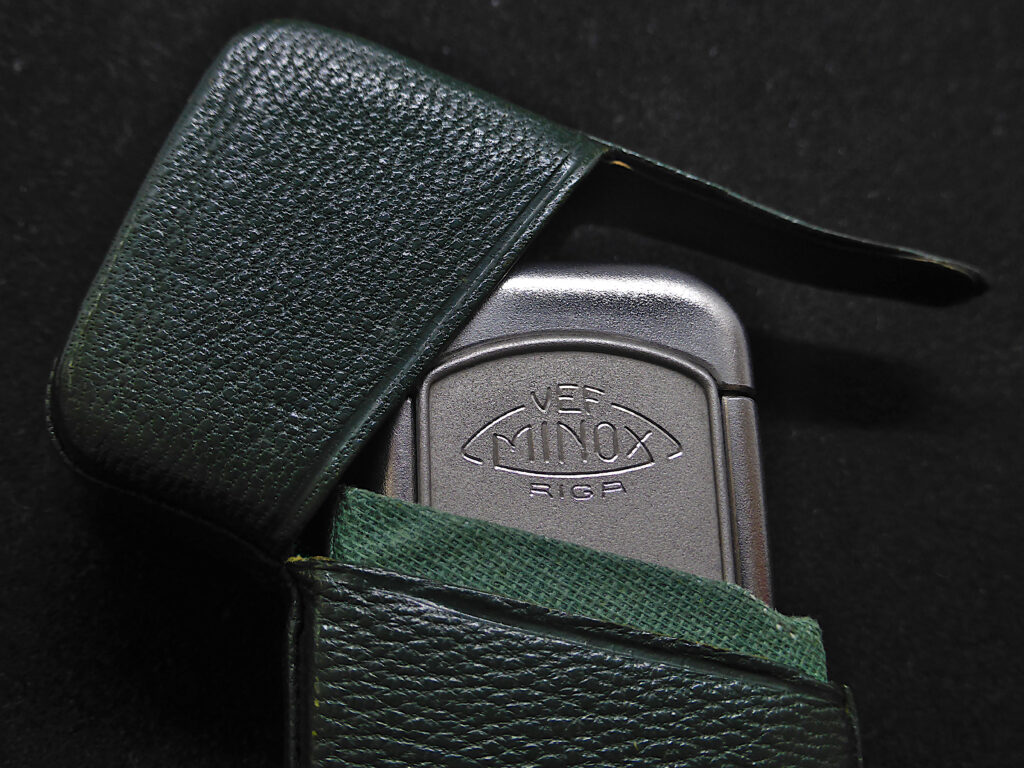
The camera was manufactured by Valsts Elektrotehniskā Fabrika (VEF, State Electrotechnical Factory) in Riga, which had been founded in 1919. In the period from 1938 to 1944, a total of approx. 17,500 Minox were produced and very well received by the market, for example in the UK. The retail price in the USA was 79 $ in 1940. That corresponds to about 1800 $ today.
The Soviet Union occupied the Baltic states from 1940 to 1941. Around 3000 Minox cameras were produced during this time. Afterwards Riga was under German occupation from 1941 to 1944. Before the Soviets 1944 invaded again Latvia, VEF employees hid a few boxes of newly manufactured Minox cameras and parts under the floor boards of VEF buildings to prevent them from falling into the hands of the occupying forces. These boxes were discovered by chance during renovation work in 1989. The cameras found were put on the market in the following years. They can be recognized by their serial numbers from the 15xxx range (source: Minox Freund 2/95). The individual parts found were assembled into cameras and also brought onto the market. They can be recognized by the serial numbers 16xxx and by the fact that they have no engraving on the film chamber cover or recent copy engravings (source: submin.com).
I therefore assume that my Riga Minox is one of the cameras found and was manufactured between 1941 and 1943. This is indicated by the serial number 15820 and the original engraving:

During the retreat from the Soviet troops in 1944, the Germans blew up the factory. After that, no more Minox were built there. Due to the turmoil of war and the past 80 years, many Riga Minox were lost. Therefore, especially well-preserved and functional Riga Minox are rare.
Taking pictures with the Riga Minox
The operation of the Riga Minox is identical to the successor model, the Minox A. The Minostigmat lens is perhaps not quite as sharp at the edges as the later four-lens Complan. Nevertheless, the results can certainly keep up with the later models.
Since the Riga Minox did not have a light meter, VEF provided an interactive table with which the exposure time could be determined. Also the manufacturer has been thinking about the best way to store Minox negatives. As early as 1938 the Minox came with special transparent celluloid sleeves for 50 negatives.
The following pictures were taken with the above Riga Minox and an Kodak Ektar 100 in 2024.
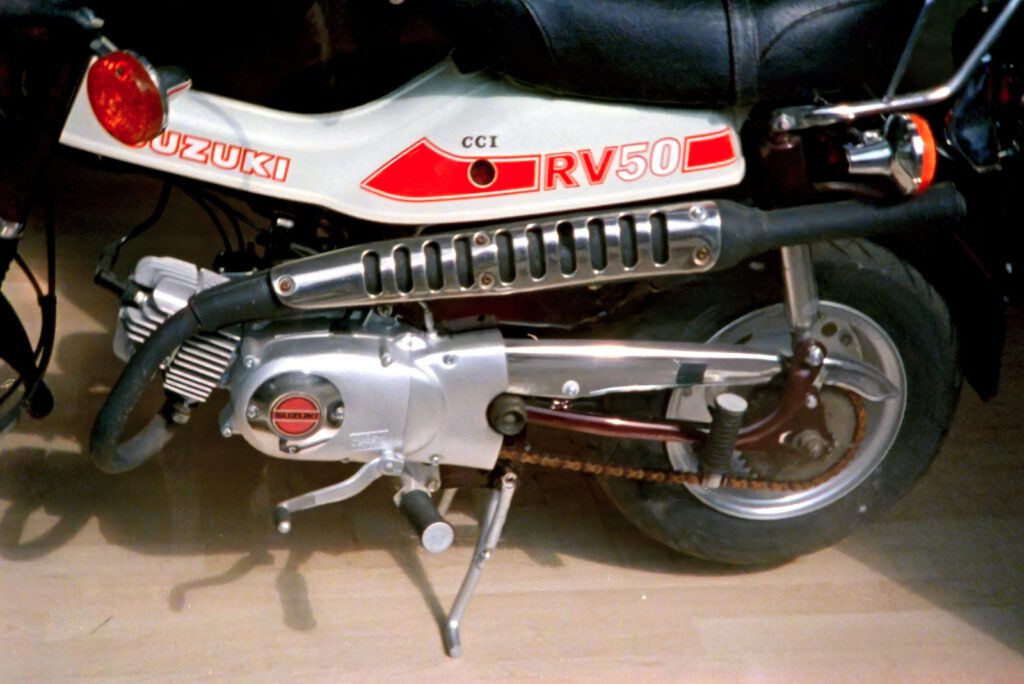

Test photos at different distances
Distance setting infinite, negative uncut. Note the sharpness as well as the natural colors, even though the lens is not coated:
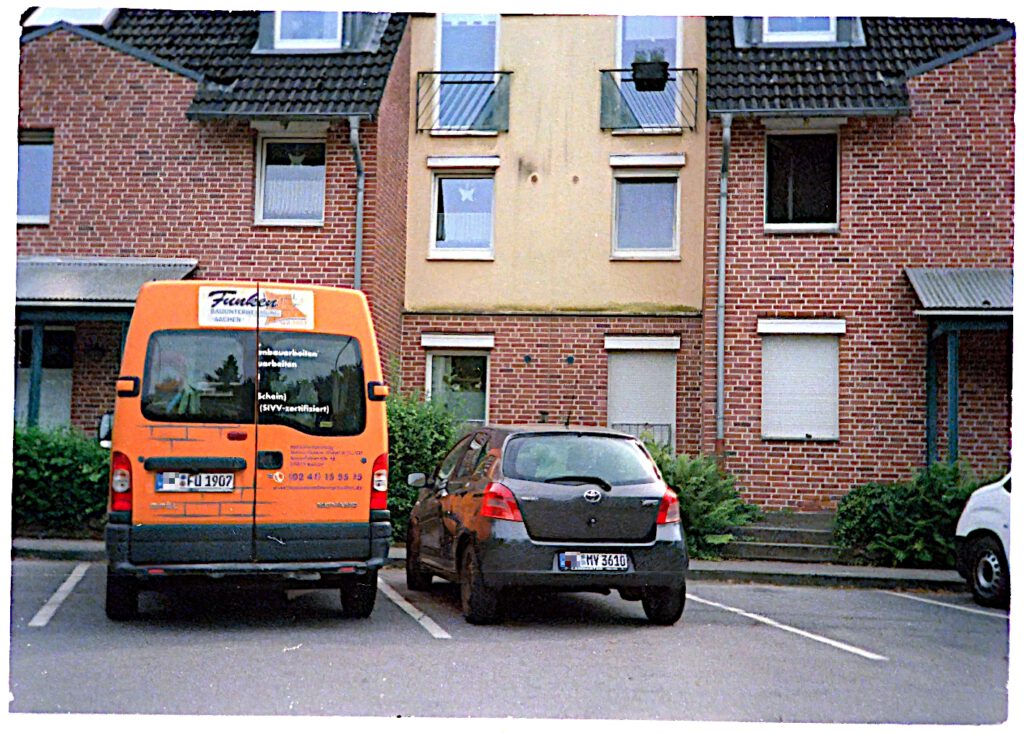
Distance setting 0.2 m, negative uncut. Check the details and note the exact frame due to the automatic parallax compensation:

Distance setting 0.2 m, negative uncut, to check the lens distortion. Note the lack of distortion at the edges:
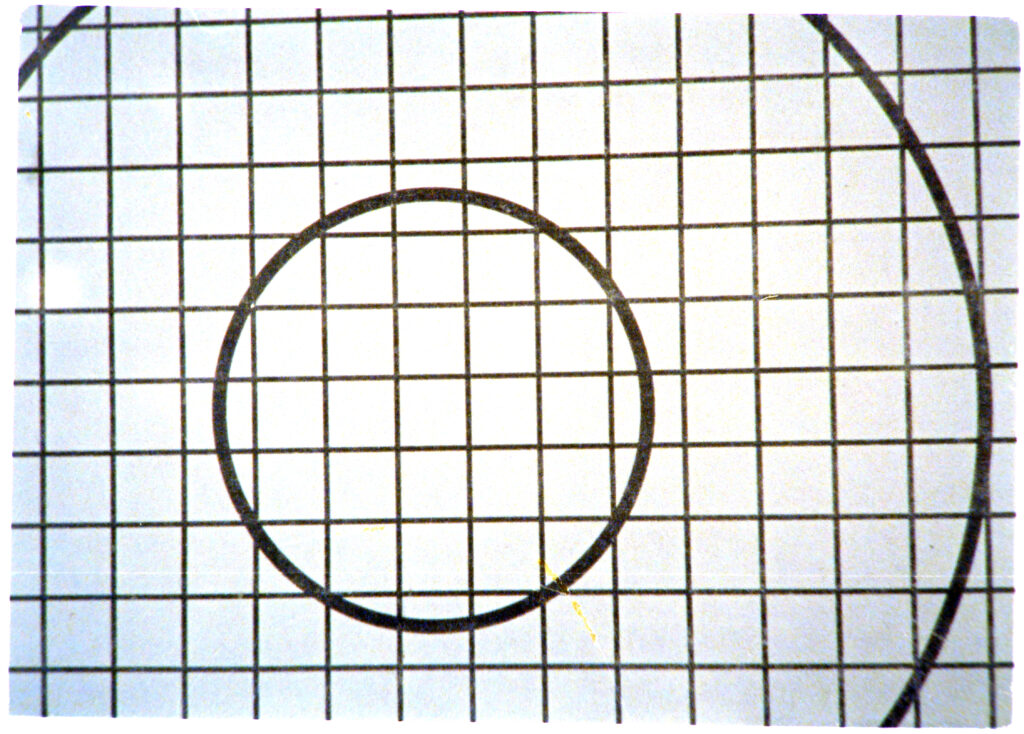
Distance setting 0.2 m, negative uncut, to test the distance setting and depth of field. Note the maximum sharpness at 0, which corresponds exactly to the set distance:
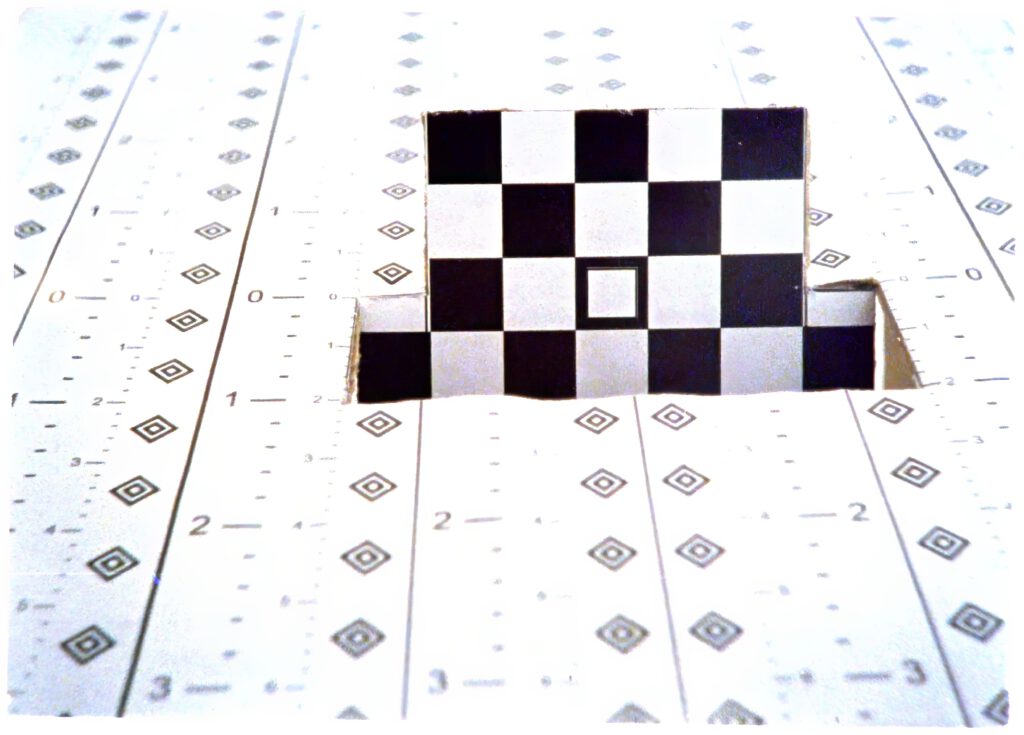
Riga Minox in a Russian prisoner of war camp
Proof of how robust and reliable the Riga Minox was is the story of Klaus Sasse, who secretly took photos of everyday life in the camp with it for two years as a prisoner of war. In Königsberg (today Kaliningrad), the German lieutenant, who had been in charge of telegraphic communications, was taken prisoner of war by the Russians in April 1945.
It seems an impossible undertaking to secretly take photographs in prison camps and keep the camera hidden from the repetitive felting. Against all odds, he managed to take 179 pictures from 4 rolls of film with 50 shots each and had them smuggled out of the camp to Germany. He knew that he would be shot immediately if the camera was found in his possession. In the following picture you can see him secretly taking a photo of himself in a pane of glass. You can clearly see the Minox.
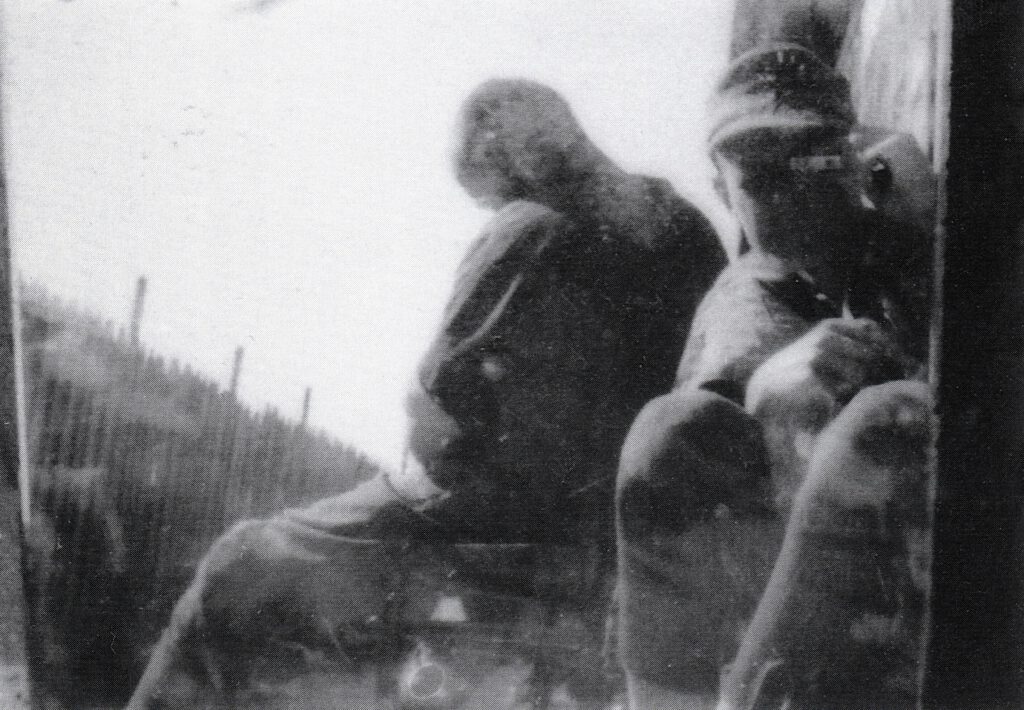
courtesy of Waxmann Verlag, Germany ©
Without a light meter, in brief, unguarded moments, he took moving and shocking pictures. They are unique, because there are no other unauthorized photos from Soviet prisoner of war camps. He has written a detailed report on this, which has been published as a book.
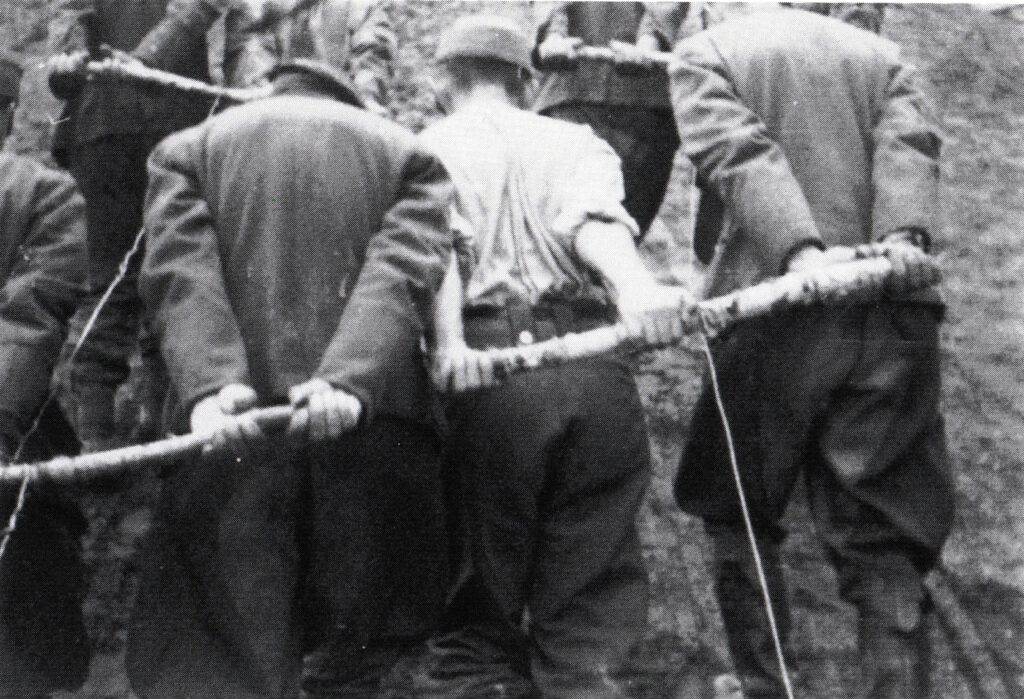
courtesy of Waxmann Verlag, Germany ©
His report touched me even more than the pictures. As a German, I have previously learned first-hand from stories about the terrible treatment of Russian prisoners of war in the German Reich. Sasse describes in nuanced ways also the good treatment that he himself experienced in the Russian camps. He tells of the female Russian camp doctor who treated him better when he was seriously ill than the German doctor and fellow prisoner.
It is tragic when he tells of his Russian guards taking the prisoners’ meager food because they themselves were so hungry. The following photo shows Sasse himself in the camp’s detention cell (карцер). The photo was secretly taken through a hole in the door by a fellow prisoner with Sasse’s Minox. He is wearing a thin coat made of nettle cloth and sitting on a table to protect himself from the cold.
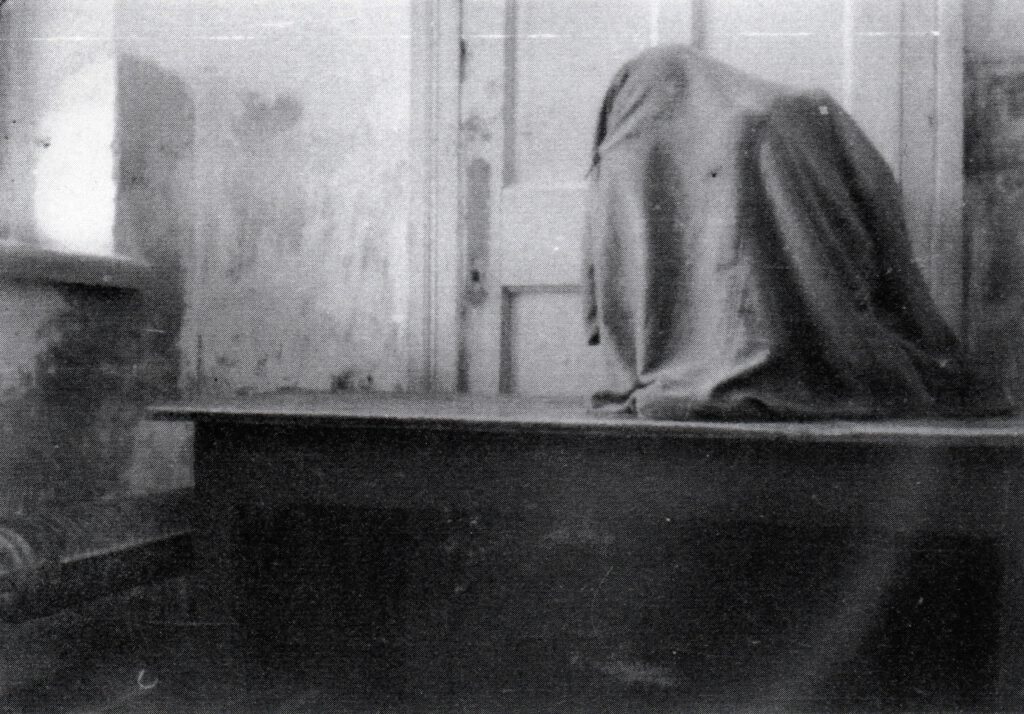
courtesy of Waxmann Verlag, Germany ©
He was sentenced to three days in detention for taking a handful of grains from a sack. The punishment seems very harsh for such a trivial matter. However, one must remember that one of the three largest famines in the history of the Soviet Union was taking place at that time, in which one to two million Soviet citizens lost their lives. The citizens were hardly better off than the camp inmates.
Fortunately, Sasse survived his time as a prisoner of war and was therefore able to report on his experiences. It was an extraordinary stroke of luck that he was able to take the photos and bring them to Germany. He died in 2003.
Conclusion
Zusammenfassung des Artikels „My Riga Minox – The Turning Point“ (Aktualisierte Fassung)
Der Artikel beschreibt die Riga Minox (VEF Minox Modell I), einen großen Wurf in der Kameratechnik, der von Walter Zapp in den frühen 1930er Jahren aus dem Nichts heraus erfunden wurde. Die Kamera wurde als “Turning Point” (Wendepunkt) in der Fotografie beworben, da sie darauf abzielte, Präzision mit extremer Handlichkeit und einfacher Bedienung zu vereinen – ein klarer Gegensatz zu den großen, komplexen Kameras der damaligen Zeit.
| Erfindung & Design | Walter Zapp entwickelte die Kamera akribisch, wobei die Baupläne bereits 1934 fertiggestellt waren. Sie basierte auf völlig neuen Prinzipien und setzte Maßstäbe in der konsequenten Miniaturisierung. Das kompromisslose Design führte zu einem robusten Gehäuse aus rostfreiem Stahl und brachte zahlreiche Patente hervor. |
| Einzigartige Merkmale | Die Innovationen umfassten die Minostigmat-Linse (15 mm, f/3.5, Festblende), den bis zu 1/1000 Sekunde schnellen Guillotine-Verschluss und den neuartigen Schiebe-Mechanismus zum automatischen Spannen des Verschlusses und Filmtransports. Eine weitere Neuheit war die Filmpatrone mit zwei Kammern für 50 Aufnahmen, die einen einfachen Filmwechsel bei Tageslicht ermöglichte. |
| Produktion | Die Kamera wurde von 1938 bis 1944 in der Valsts Elektrotehniskā Fabrika (VEF) in Riga hergestellt. Trotz der kurzen Produktionszeit etablierte die Riga Minox alle wesentlichen Merkmale, die in den späteren 8×11-Minox-Modellen bis 1994 beibehalten wurden. |
| Bedeutung | Die Kamera, die als “elegante Begleiterin” konzipiert war, fand aufgrund ihres künstlerischen Designs einen Platz im Museum of Modern Art. Sie ist ein historisches Symbol für technisches Neuland, da sie das Prinzip einer Kamera von Grund auf neu dachte. |
Der Artikel betont, dass die Riga Minox ein Meisterwerk der Technik und des Designs ist, das die Möglichkeit schuf, Momente des Alltags mühelos und diskret festzuhalten.
The Legacy Endures
The Riga Minox, a stroke of engineering genius created entirely from scratch, was the ultimate turning point for subminiature photography. Walter Zapp’s project was not a mere refinement of existing technology, but a radical invention based on entirely new principles that defined an entire category of camera.
The immediate success of this first model was due to its revolutionary integration of a high-speed shutter, a precision lens, and automatic mechanisms into a housing smaller than any competitor. The innovation was so profound that it generated numerous patents and established all the core operational features that the Minox line would follow for the next five decades.
The Minox proved that cutting-edge precision could be unified with maximum convenience and portability. Today, this tiny, robust stainless steel camera remains a powerful symbol of design philosophy, demonstrating the enduring power of a single, uncompromising vision to revolutionize how we capture the fleeting “moments of now.”
Further articles on the VEF Minox Riga
- Restoration of a VEF Minox Riga: A unique description of a repair project with unique pictures and video of the inner workings of this camera.
- How the VEF Minox Riga shutter works: A detailed explanation of this shutter, which differs fundamentally from all subsequent Minox models.
- Minostigmat vs. Complan: A unique practical test that examines the quality of the two famous lenses.
Footnote:
- Camera in Minox leather case for Flash Gun Model B ↩︎


